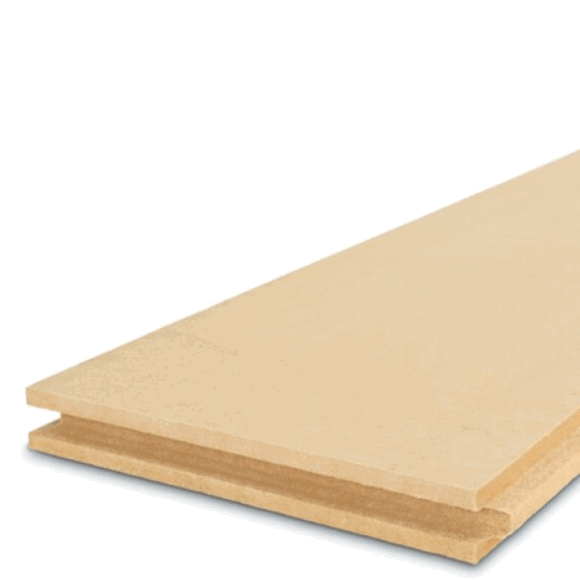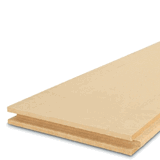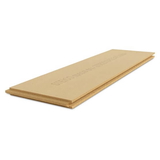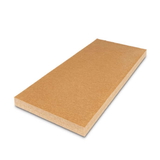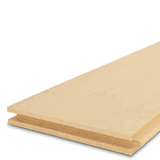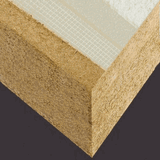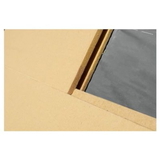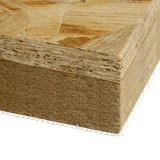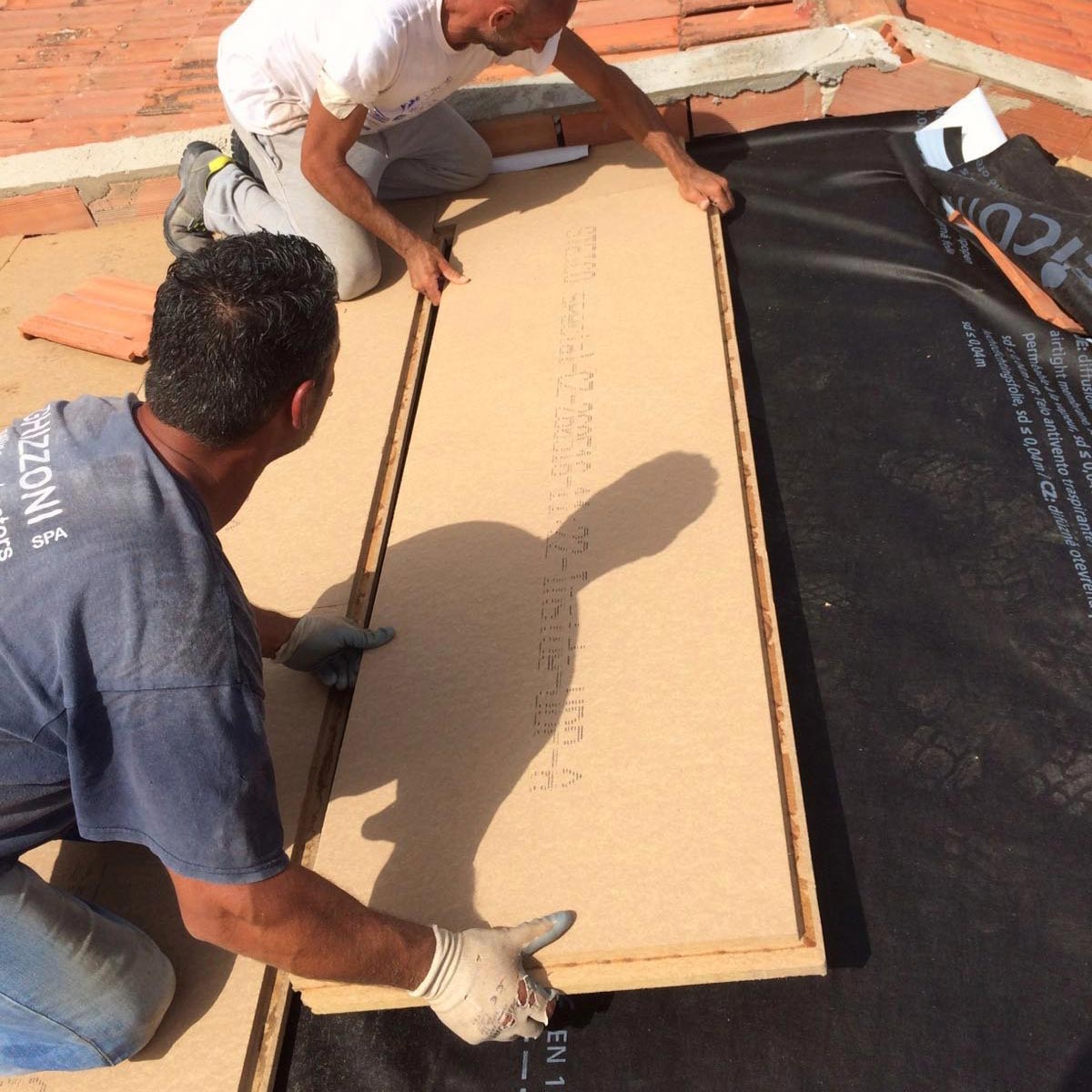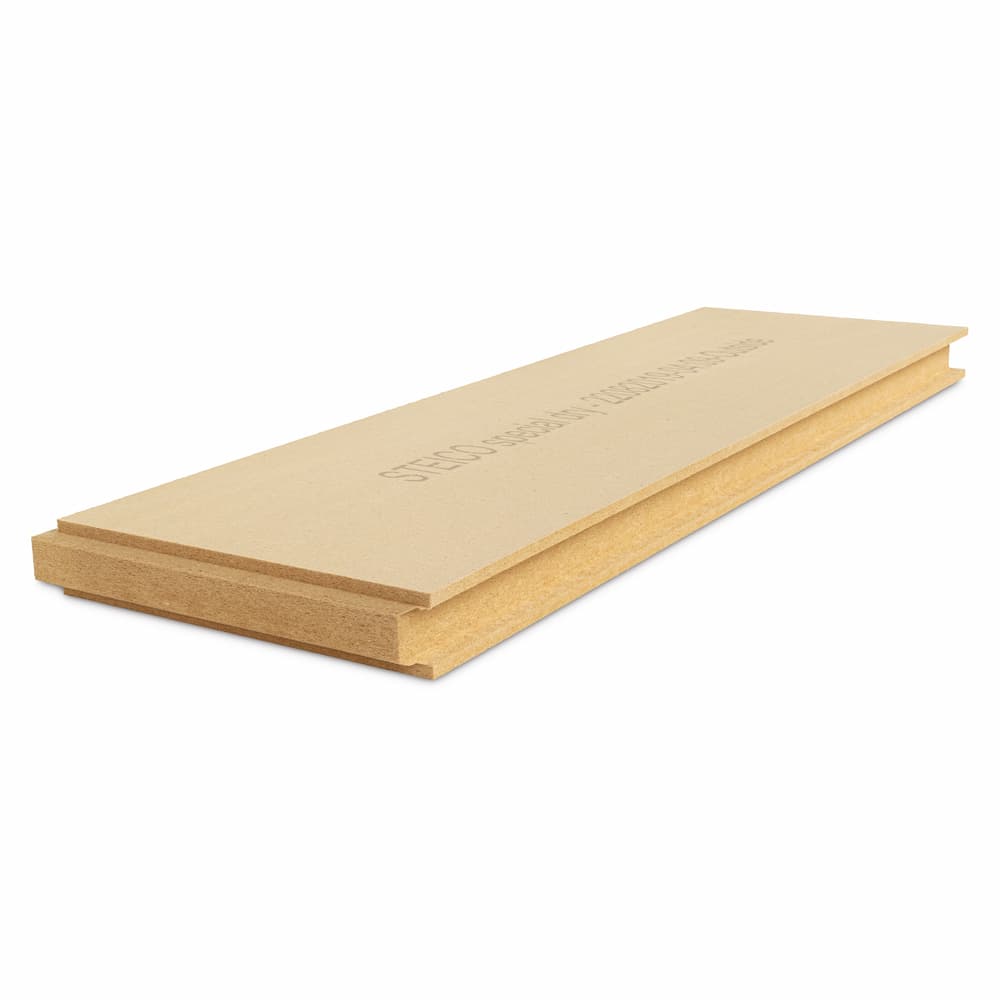- Blogs
- A Comprehensive Guide to Wood Fibre Insulation Boards in the UK
A Comprehensive Guide to Wood Fibre Insulation Boards in the UK
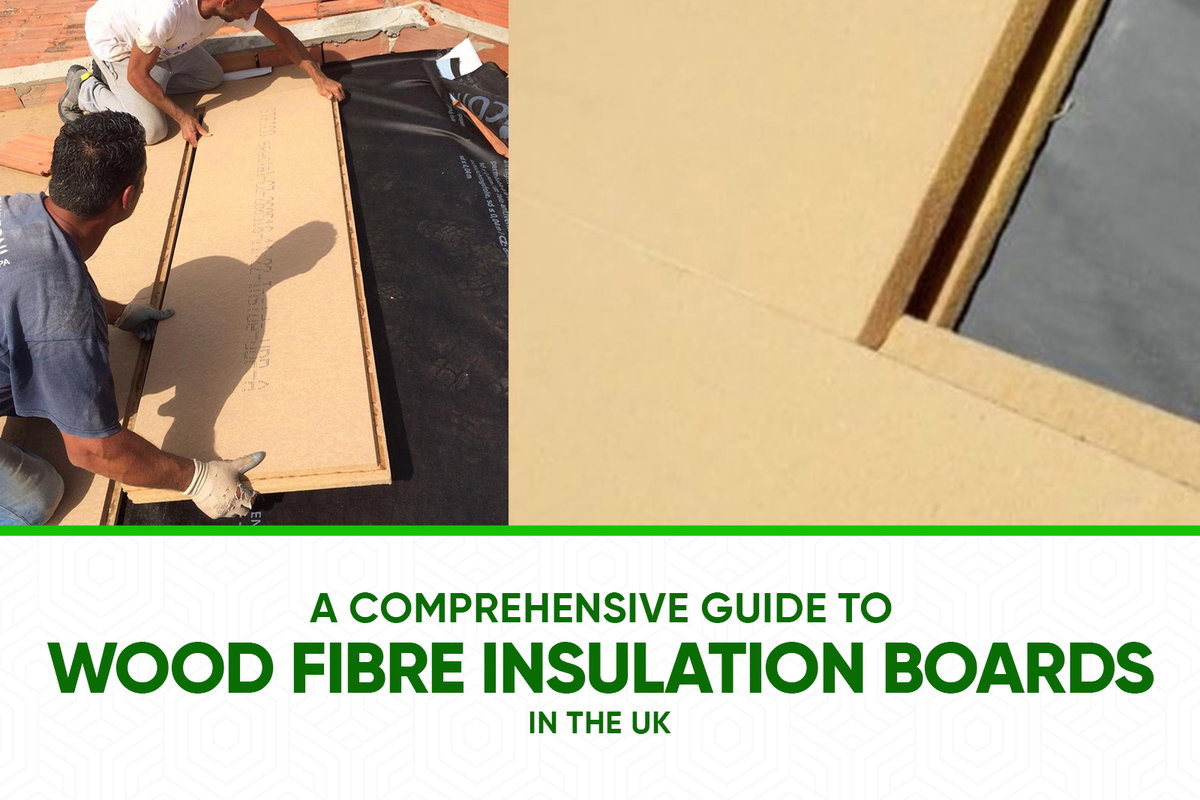
Introduction to Wood Fibre Insulation
Wood fibre insulation is becoming an increasingly common sight on UK construction projects, specified for both new-build properties and the refurbishment of existing homes. It is an ecological material that offers a sophisticated, multi-functional approach to building performance. Far from being just an "eco-friendly" alternative, it is a high-performance building component that can address several challenges at once: thermal comfort, moisture management, and acoustic control.
Its properties make it particularly suitable for modern methods of construction, such as timber-frame buildings, where its compatibility with timber is a clear advantage. At the same time, its ability to breathe makes it an excellent choice for retrofitting older, solid-walled buildings, which often require materials that can manage moisture effectively to avoid long-term damage to the building fabric.
TLDR: WoodFibre Insulation at a Glance
What it is: A natural insulation material manufactured from wood chips and other timber industry by-products, primarily from coniferous trees. It is a sustainable building material available in the UK.
Key Benefits: It provides excellent thermal performance, keeping buildings warm in winter and, due to its high density, helping to prevent overheating in summer. It is also breathable, meaning it helps to regulate moisture within the building structure, reducing the risk of damp. It offers good acoustic insulation and stores carbon within its fibres.
Main Forms: It is available as rigid boards for insulating walls, roofs, and floors, and as flexible batts designed to fit snugly between structural elements like wall studs and roof rafters.
Leading UK Brands: The most prominent manufacturers supplying wood fibre insulation in the UK market are Steico and Pavatex.
Compliance: Wood fibre insulation products meet the requirements of UK Building Regulations. The primary European product standard is BS EN 13171, which ensures products are tested to a consistent specification.
From Forest to Board: Materials and Manufacturing ![]()
Understanding how wood fibre insulation is made is fundamental to appreciating its different forms and how they should be used. The journey from a sustainably managed forest to a finished insulation board involves specific processes that give each product its unique characteristics.
Raw Materials: A Sustainable Source
The primary raw material for wood fibre insulation is fresh coniferous wood. This is typically sourced from the by-products of the timber industry, such as wood chips, sawdust, and off-cuts from sawmills. This approach ensures that waste from one industrial process becomes a valuable resource for another.
Manufacturers place a strong emphasis on sustainability, sourcing wood from forests managed under schemes like the Forest Stewardship Council (FSC) or the Programme for the Endorsement of Forest Certification (PEFC). This practice not only makes wood fibre a renewable material but also means the product acts as a form of carbon storage, locking carbon away within the building's structure for its entire lifespan.
The Manufacturing Processes: Wet vs. Dry
There are two distinct methods used to manufacture wood fibre insulation boards, and the choice of process directly influences the final product's properties and its ideal application.
The Wet Process
In the wet process, wood chips are first broken down into individual fibres using steam and mechanical grinding. These fibres are then mixed with water to form a pulp-like slurry. This mixture is poured onto a mesh screen, where much of the water is drained away and pressed out, forming a wet mat of fibres.
This mat is then dried in large ovens. A key feature of this method is that the natural lignin within the wood itself acts as a binder, activated by the heat and pressure of the process to glue the fibres together. No additional synthetic adhesives are needed, which makes wet-process boards exceptionally natural. The result is a dense, rigid board with excellent structural integrity. This density provides high thermal mass and what is known as capillarity—the ability to wick and transport liquid moisture. These properties make wet-process boards an ideal choice for applications like internal wall insulation on solid masonry walls, where managing potential moisture is a critical concern.
The Dry Process
In the dry process, the wood fibres are dried before they are formed into a mat. A small quantity of a binding agent, such as a polyurethane-based resin (PMDI), is then added to the dry fibres. This mixture is laid out to form a mat which is then cured with heat and pressure to bond the fibres together.
This method allows for the creation of boards that are lighter in weight and can be produced in much greater thicknesses—often up to 200 mm or more in a single layer. The lighter weight and greater thickness make these boards well-suited for applications such as external wall insulation (EWI) systems and for insulating over the top of rafters in roof constructions. In these situations, handling large but lightweight boards at height is a practical advantage, and achieving the required insulation depth in a single layer can be more efficient. The dry process is also used to produce flexible insulation batts and loose-fill insulation that can be blown into cavities.
The manufacturing method is therefore not an incidental detail; it is the determining factor in a product's performance profile. The density and moisture-handling capabilities of a wet-process board are deliberately engineered for certain applications, just as the lighter weight and thickness of a dry-process board are tailored for others. This distinction is central to specifying the correct wood fibre product for a given construction scenario.
The Performance Benefits of WoodFibre Insulation Boards
Wood fibre insulation offers a holistic set of performance benefits that contribute to a comfortable, healthy, and energy-efficient building.
Thermal Performance: Year-Round Comfort
Wood fibre provides excellent thermal insulation in both winter and summer. During colder months, it effectively reduces heat loss from the building, helping to lower energy bills and meet the stringent fabric efficiency standards required by UK Building Regulations.
However, one of its most significant advantages is its ability to prevent summer overheating. This is due to a property known as decrement delay, which is a result of its high thermal mass (a combination of its density and specific heat capacity). The material is dense enough to absorb and store a large amount of heat energy from the sun during the day. It then releases this heat very slowly over many hours, typically during the cooler night. It can take up to 15 hours for heat to travel through a thick layer of wood fibre insulation, compared to only a few hours for lightweight synthetic insulation. This delay means that on a hot summer's day, the peak heat from the sun does not penetrate the interior of the building, keeping rooms cooler and more comfortable. This is a particularly valuable quality in light of the UK's increasing focus on mitigating overheating, as addressed in building regulations.
Moisture Regulation: A Breathable Solution
Wood fibre is often described as "breathable," a term that refers to two distinct but related properties. Firstly, it is vapour-permeable, meaning it allows water vapour (the moisture in the air) to pass through it. Secondly, it is hygroscopic, meaning the fibres can absorb and release moisture from the surrounding air without damaging the material or compromising its insulating performance.
This ability to actively manage moisture is a considerable benefit, especially in the UK's damp climate. It helps to buffer indoor humidity levels and protects the building's structure from the risks of interstitial condensation (moisture getting trapped within the construction), which can lead to mould growth and decay. For older buildings with solid walls that were designed to breathe, using a breathable insulation like wood fibre is essential to maintain the health of the building fabric.
Acoustic Performance
The high density and porous, fibrous structure of wood fibre boards give them excellent sound-absorbing properties. This makes them very effective at reducing the transmission of airborne noise, such as traffic from outside or sounds from adjacent rooms, contributing to a quieter and more peaceful indoor environment.
Fire Performance
While wood fibre is a combustible material, typically with a Euroclass E rating for its reaction to fire, its performance in a fire is predictable and relatively safe. When exposed to flames, the surface of the board chars. This charred layer acts as a protective barrier, slowing down the rate at which the fire can burn through the material and protecting the underlying structure.
Unlike many synthetic plastic foam insulations, wood fibre does not melt, drip, or produce large quantities of dense smoke. It also does not release highly toxic gases, such as hydrogen cyanide, when heated. This predictable behaviour can provide valuable time in the event of a fire.
Sustainability and Health
From an environmental perspective, wood fibre is a leading choice. It is made from a renewable resource that sequesters carbon. It has a low embodied energy, meaning less energy is consumed in its manufacture compared to petrochemical-based insulations. At the end of a building's life, the boards can be recycled or composted.
For the health of installers and occupants, wood fibre is also a positive choice. The boards are free from harmful chemicals and additives. Some products carry independent certifications, such as the IBR seal from the German Institute for Building Biology, which confirms that they are made from harmless ingredients and are safe for indoor air quality.
A Comparison: Wood Fibre vs. Conventional Insulation
When selecting an insulation material, it is common to focus on a single performance metric. However, a more complete assessment that considers a range of properties provides a clearer picture of how a material will perform in a real-world building. The following table compares wood fibre with two of the most common insulation materials used in the UK: mineral wool and polyisocyanurate (PIR) foam boards.
Characteristic |
Wood Fibre |
Mineral Wool |
PIR (Polyisocyanurate) |
| Thermal Conductivity (W/mK) | Good (approx. 0.038 - 0.048) | Good (approx. 0.036) | Excellent (approx. 0.022) |
| Summer Heat Protection (Decrement Delay) | Excellent | Poor | Poor |
| Vapour Permeability (Breathability) | Excellent | Excellent | Poor (Vapour-tight) |
| Moisture Handling (Hygroscopic) | Excellent | Poor | Poor |
| Acoustic Insulation | Very Good | Excellent | Fair |
| Environmental Impact (Source/Carbon) | Renewable, carbon-storing | Natural rock, energy-intensive | Petrochemical-based, high embodied energy |
| Fire Performance | Chars, slows fire, low toxicity smoke | Non-combustible (A1 rated) | Fire-resistant treatment, can release toxic smoke |
This comparison shows that while a material like PIR offers the lowest thermal conductivity, meaning it provides the most insulation for a given thickness, this is only one aspect of its performance. Its lack of breathability means it must be used with carefully detailed vapour control layers to prevent moisture problems. It also offers very little protection against summer overheating.
Mineral wool offers good thermal and excellent acoustic performance and is non-combustible, but it does not actively manage moisture in the same way as wood fibre and does not prevent summer heat gain.
Wood fibre provides a more balanced performance profile. While it may require a slightly greater thickness to achieve the same thermal performance as PIR in winter, its ability to also manage summer heat, regulate moisture, and provide good acoustic insulation makes it a more holistic solution for the building fabric.
Key Manufacturers and Products in the UK ![]()
Two main brands dominate the wood fibre insulation market in the UK, each offering a comprehensive range of products for different applications.
Steico
Steico is a German company founded in 1986 and is now a world leader in the production of wood fibre insulation. Its products have been available in the UK for over 25 years, and the company has a well-established presence with a wide range of systems.
Key UK Product Lines:
Rigid Boards: Steico Therm (for internal insulation), Steico Protect (for external render systems), and Steico Universal and Steico Special Dry (for sarking and sheathing on roofs and timber frames).
Flexible Batts: Steico Flex 036 is a flexible insulation batt for fitting between studs, joists, and rafters.
Blown-in Insulation: Steico Zell and Steico Floc are loose-fill wood fibre and cellulose products for blowing into closed cavities.
System Components: Steico offers a complete range of airtightness and weather-tightness tapes and membranes under the Steico Multi brand.
Pavatex
Pavatex is a Swiss company with a history dating back to 1932, making it one of the original pioneers of wood fibre insulation. Now part of the Soprema group, it continues to be a major supplier in the UK.
Key UK Product Lines:
Rigid Boards: Pavatherm (a multi-purpose board), Isolair (a sarking and sheathing board, similar to Steico Universal), Pavawall (a render-carrying board for external insulation), and Pavadry (a specialist internal insulation board).
Flexible Batts: Pavaflex is the brand's flexible insulation for use between timber structures.
System Components: Pavatex also provides a full system of membranes and tapes, such as Pavatex DSB 2 (airtightness membrane) and ADB (breather membrane).
UK Wood Fibre Insulation Product Application Guide
The variety of product names can be confusing. The table below provides a simple guide to which products are typically used for common construction applications.
Application |
Steico Product Example |
Pavatex Product Example |
| Internal Wall Insulation (Plastered) | Steico Therm | Pavatherm / Pavadry |
| External Wall Insulation (Render System) | Steico Protect Dry | Pavawall / Isolair |
| External Wall Insulation (Behind Cladding) | Steico Universal | Isolair |
| Roof Insulation (Between Rafters) | Steico Flex 036 | Pavaflex |
| Roof Insulation (Over Rafters - Sarking) | Steico Universal / Steico Special Dry | Isolair |
| Floor Insulation | Steico Therm | Pavatherm |
Installation Guide: Best Practices for Wood Fibre Boards
A high-quality installation is essential to realise the full performance benefits of wood fibre insulation. The material is straightforward to work with, but attention to detail is key.
Preparation, Handling, and Cutting
Boards should be stored flat, on level ground, and protected from the weather. They can be cut using conventional woodworking tools. A hand saw is suitable for small jobs, but for larger projects, a circular saw with a low-tooth-count blade (to minimise dust) or a specialised alligator saw will be more efficient. When cutting any insulation, it is important to wear appropriate personal protective equipment (PPE), including a dust mask.
Achieving a Continuous, Gap-Free Fit
The effectiveness of any insulation relies on it forming a continuous thermal layer. Gaps between boards or between the insulation and the building structure will lead to thermal bridges and air leakage, which will compromise performance.
Flexible Batts: When installing flexible batts between studs or rafters, they should be cut approximately 5–10 mm wider than the cavity. This ensures a tight friction fit that holds the batt in place and eliminates gaps at the edges. The batts should be pushed gently into place with a flat piece of wood rather than by hand to avoid creating dents.
Rigid Boards: Rigid boards must be cut accurately and butted tightly together at all joints. For some applications, particularly where minimising thermal bridging is critical, installers may use two thinner layers of boards with the joints staggered.
Fixing and System Components
How the boards are fixed depends on the application. For internal wall insulation, they are typically secured using a combination of a compatible adhesive (such as a lime-based plaster) and specialised mechanical insulation fixings that are hammered into the wall.
For external systems, such as roof sarking or external wall insulation, using the complete system of components provided by the manufacturer is vital. This includes starting with a level base rail, using the correct type and number of fixings, and meticulously sealing all board joints, corners, and penetrations (like windows or pipes) with the correct tapes and membranes. This creates a fully airtight and weather-tight layer, which is fundamental to the system's performance. Simply installing the boards with generic accessories will not deliver the same level of performance and durability. The full benefit of a breathable, airtight construction is realised only when the entire system is used as intended by the manufacturer.
UK Standards, Regulations, and Certification ![]()
Navigating the compliance landscape is a critical part of specifying any building material in the UK. Wood fibre insulation is covered by a framework of regulations and standards that ensure its fitness for purpose.
Building Regulations Part L: Conservation of Fuel and Power
Approved Document L of the Building Regulations for England sets the standards for the energy efficiency of new and existing buildings. The latest edition places a strong emphasis on the "as-built" performance of a building, meaning that the final construction must be proven to meet its energy efficiency targets.
While Part L sets minimum performance standards for individual building elements like walls and roofs (expressed as U-values), compliance is ultimately determined by the performance of the building as a whole. A key provision for older properties is that Part L gives "Special Consideration" to traditionally constructed buildings. It states that their energy efficiency "should be improved only if doing so will not cause long-term deterioration of the building's fabric or fittings." This supports the use of breathable materials like wood fibre, which work in harmony with the original construction, over non-breathable alternatives that could trap moisture and cause harm.
Key British and European Standards
BS EN 13171: This is the harmonised European product standard for factory-made wood fibre insulation. It defines the required characteristics and testing methods for properties such as thermal conductivity, density, fire performance, and dimensional stability. Products that conform to this standard can carry a CE or UKCA mark, demonstrating that they meet a recognised quality specification.
BS 5250: This is the British Standard code of practice for the management of moisture in buildings. It provides guidance on how to control condensation risk. The most recent revision of this standard explicitly recommends a holistic approach for insulating solid walls internally, advocating for the use of capillary-active insulation materials—like wet-process wood fibre boards—that can safely manage moisture. This standard provides strong technical backing for the specification of wood fibre in retrofit projects.
BBA Certification: The UK Context
The British Board of Agrément (BBA) is a UK-based body that provides independent testing, assessment, and certification of construction products. A BBA certificate is highly regarded in the UK construction industry and gives specifiers, building control officers, and warranty providers confidence that a product is fit for its intended use and meets the requirements of UK Building Regulations.
However, BBA certification is not a legal requirement for compliance. Building regulations also recognise products that have equivalent European Technical Assessments. Historically, some manufacturers have prioritised BBA certification for their systems, while others have relied on their European approvals. This can sometimes influence product selection on projects where a BBA certificate is specifically requested by a warranty provider or local authority building control department.
The direction of travel in UK regulations is creating an environment that favours materials with the inherent properties of wood fibre. The increasing focus on as-built performance, the prevention of summer overheating, and the proper management of moisture in retrofits all align perfectly with the key strengths of wood fibre insulation. This is shifting the conversation around the material from it being simply an "eco" choice to it being a technically advanced solution for creating durable, comfortable, and compliant buildings.
Conclusion
Wood fibre insulation is a sophisticated and highly versatile material that offers a comprehensive solution to many of the challenges faced in modern construction. Its value should not be judged on a single metric but on its combined ability to deliver excellent thermal performance in both winter and summer, to actively manage moisture and protect the building fabric, to improve acoustic comfort, and to contribute positively to the health of both the building's occupants and the wider environment. For those looking to create high-quality, resilient, and future-proof buildings in the UK, wood fibre insulation presents a robust and intelligent choice.
Legal Disclaimer
The information provided in this article is for general informational purposes only and is published in good faith. It does not constitute professional, technical, financial, or legal advice. The content of this website should not be used as a substitute for a detailed assessment and specification by a qualified architect, surveyor, structural engineer, or other relevant building professional for any specific project.
You should not act or refrain from acting based on the information contained herein. Always consult with an appropriate professional for advice tailored to your individual circumstances. All construction work must comply with the latest UK Building Regulations, relevant British Standards, and local authority requirements. Products mentioned must be specified and installed in strict accordance with the manufacturer's most current technical data sheets and installation guidelines.
We make no representations or warranties of any kind, express or implied, about the completeness, accuracy, reliability, or suitability of the information contained in this article for any purpose. Any reliance you place on such information is therefore strictly at your own risk. To the fullest extent permitted by the law of England and Wales, we disclaim all liability in respect to actions taken or not taken based on any or all of the contents of this site. This does not exclude or limit our liability for death or personal injury arising from our negligence, or our liability for fraudulent misrepresentation, or any other liability which cannot be excluded or limited under applicable law. The law is subject to change and the information provided may not reflect recent legal developments.

Samuel Hitch
Managing Director
Buy Insulation Online.
Leave A Reply
Your feedback is greatly appreciated, please comment on our content below. Your email address will not be published. Required fields are marked *

